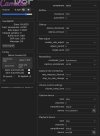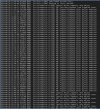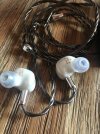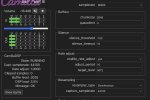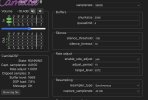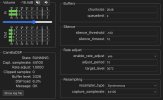AncientMariner
Member
- Joined
- Mar 13, 2024
- Messages
- 74
- Likes
- 55
I have a Umik-1. Not sure how to measure through the Pi as streamer? I suppose I could do it via Airplay, but I don't have the best experience with that in the past due to the lag. How does everyone else go about that?Do you have a USB microphone? You might want to measure your system using REW (it is free to download and use, though they do take donations). If you do not already have a microphone, a miniDSP UMIK-1 is sufficient for running frequency response measurements. It costs around $100 if I remember correctly.
What I did instead to get past any psychological influence was to compare it with my previous solution (a Qudelix 5k straight into the amp). I couldn't hear anyt difference between that and the Pi/Scarlett (Bluetooth connection to the Qudelix vs. Spotify connect). So the good news is that I got everything working to my satisfaction (thank for all the help here).
Regarding the Focusrite Scarlett, despite my initial grievances, it does the job, so I think I will keep in anyway. For sure there was something wrong with the internal mixes that caused distortion, like a gain turned up too high. Regarding that the volume only controlling output 1+2, I though about it, and it's not a big issue for me. I was never planning to actually use the volume knob for actually controlling volume. I just want it to be able limit the output to the Fosi Monoblocks when I get those (blown speakers prevention). For that 1+2 is sufficient, and the subwoofer has it's own volume control.
Also, I got better with the Pi and got Spotify connect installed, as mentioned above. And I learned to get better understanding the config files. I don't know how important is is if e.g. sample format is the same in the streamer application and in CamillaDSP? Anyway, I am now able to understand those files beyond just following a guide, and try to make sure everything matches up.
It's been a great adventure leaning how a Pi works (zero Linux experience!), but to anyone in a similar situation as myself, prepare to sink in several days of work.
What I'm missing now is some fine tuning. I get a lot of
Code:
[src/alsadevice.rs:138] PB: Prepare playback after buffer underrunMaybe the streamer app can't deliver fast enough? Looking more at the config files for the streamer apps would be my next step.
Besides optimization, I would like to see if I can get Tidal connect. And then I wan't to sink my teeth into actually using CamillaDSP. So far I just imported the PEQ room correction I had running on the Qudelix. Want to learn Rephase and see what that does too. I'm not in a big rush with that though.
My config and error log to illustrate how frequent the error occurs. Also, unrelated, I got a new IEM today, that I ordered 2 weeks ago from China, so I spent most of the day playing around with that.

